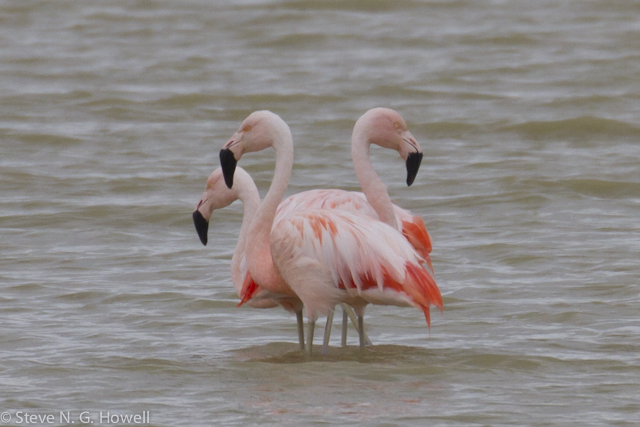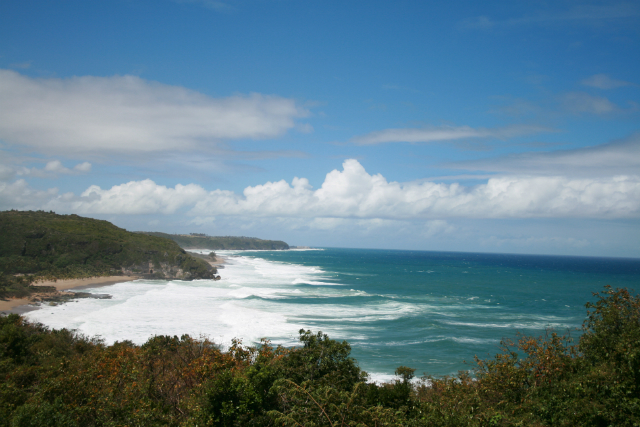From the Field
April 19:
Rich Hoyer on his and Luke Seitz's recently completed tour, Costa Rica
No one could be blamed for choosing Resplendent Quetzal as their favorite bird on the Costa Rica in Spring tour. We had wonderful views of this magnificent species on three different days, one all to ourselves on a quiet trail near the famous town of Monteverde.
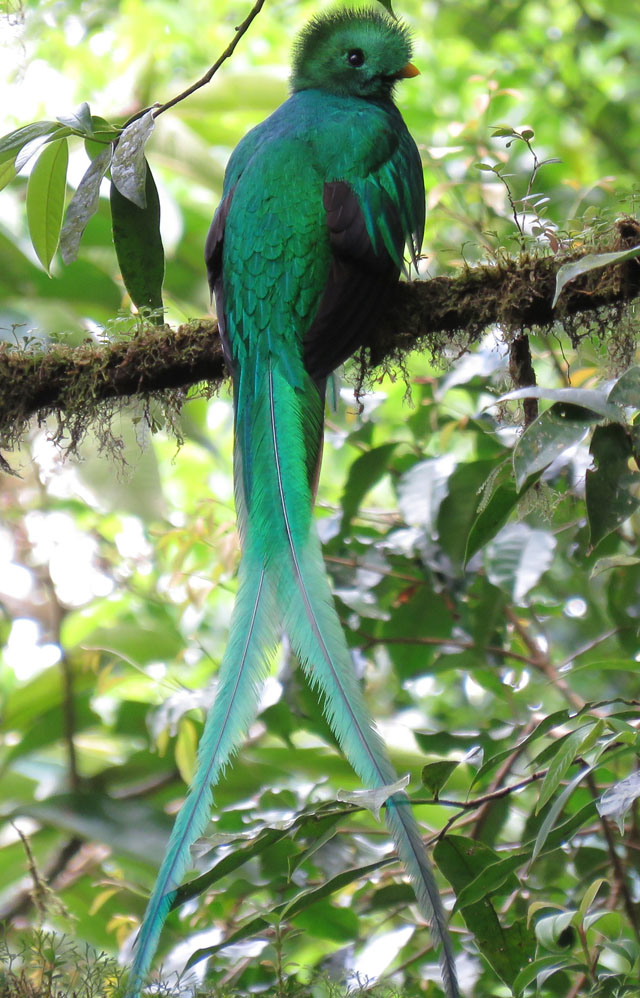
But in reality it was very difficult to choose favorites when we saw so many species, so many of them colorful gems, and so many of them well. Red-headed Barbet is never a guarantee, so seeing a pair with a group of Speckled Tanagers at a feeder on our third day was a treat.
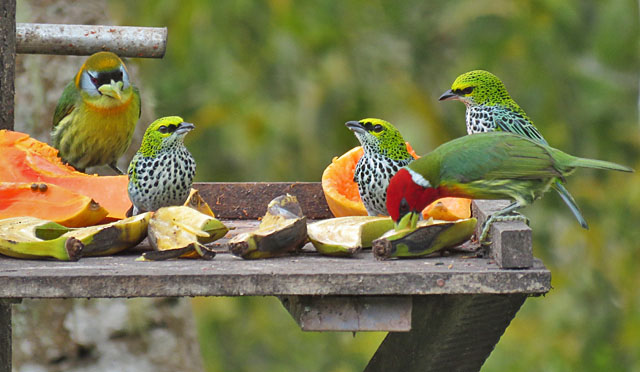
Another bird of the highlands, often the favorite of the day was Collared Redstart, and some were incredibly confiding.
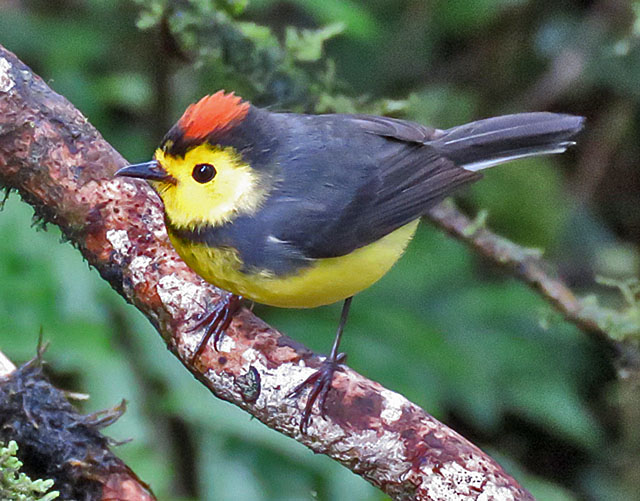
In the cool highlands of Cerro de la Muerte we marveled at the blue and opal iridescence on a Spangle-cheeked Tanager that seemed to be fighting its reflection in the windows of the hotel restaurant.
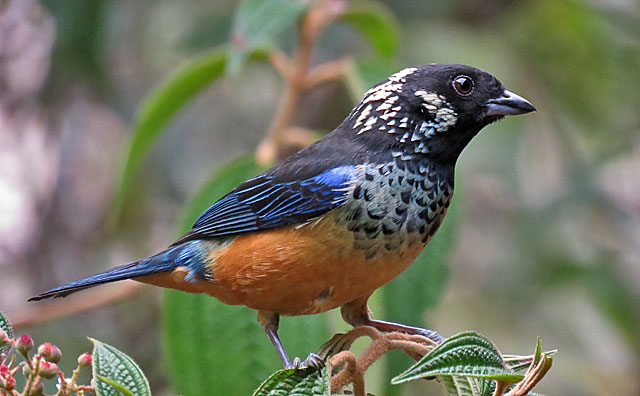
In the warm lowlands of the Osa Peninsula we had huge bird lists each day, with Scarlet Macaw and Yellow-billed Cotingas among the top favorites. A Lesson's Motmot was often right around the lodge.
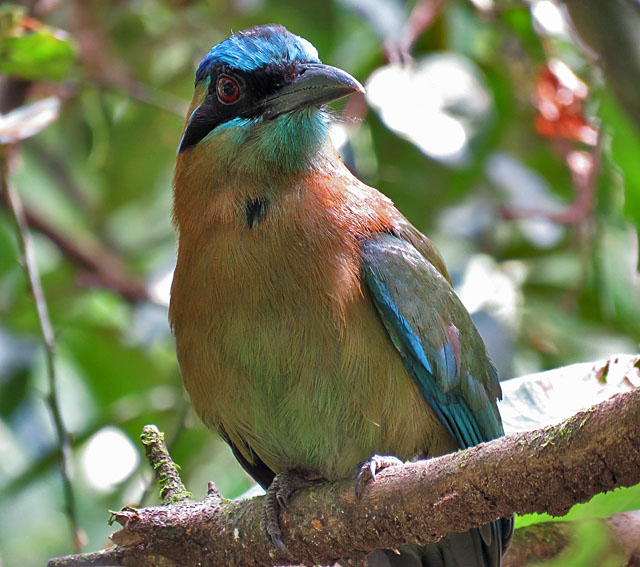
The only bats we identified to species were those on their day roosts, offering wonderful photographic opportunities, such as a Greater Sac-winged Bat in the eves of the lodge.
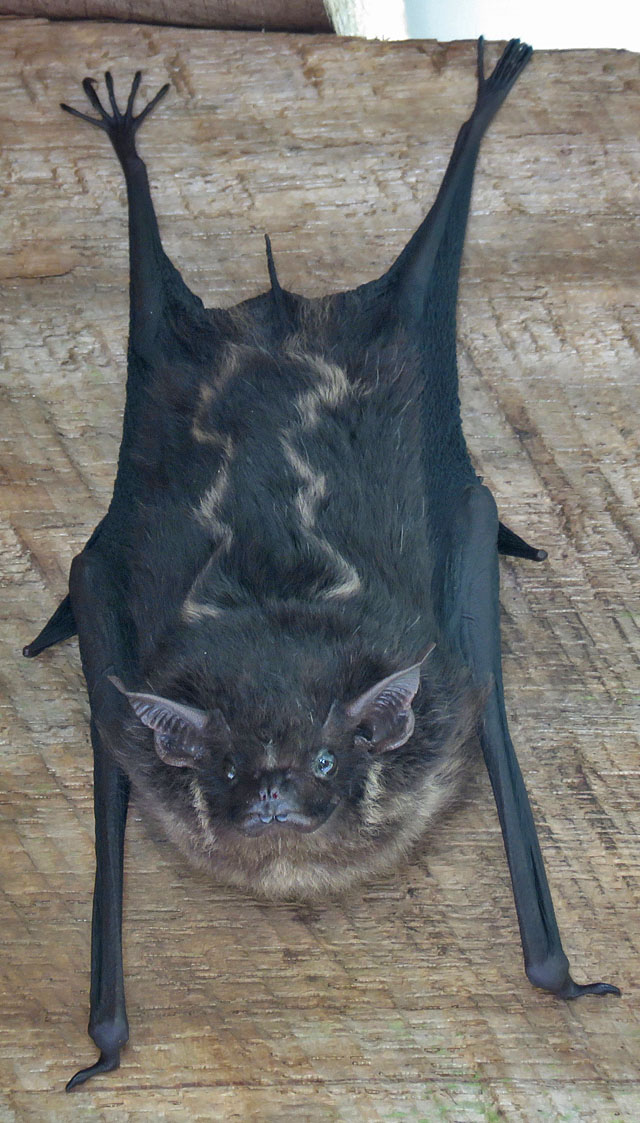
A female Black-throated Trogon on the trails at Bosque del Rio Tigre could not have been more confiding.
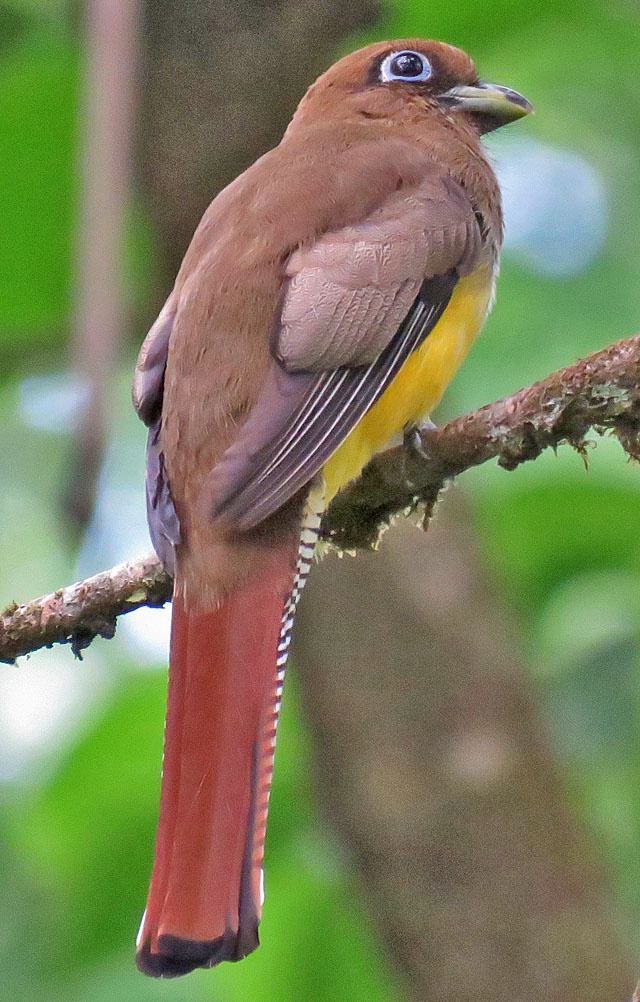
We completed the tour on the Caribbean slope where we had our first rain. But this allowed us to look for a very special frog. Finally, after some searching to find the pond, close inspection revealed two stunning Red-eyed Treefrogs.
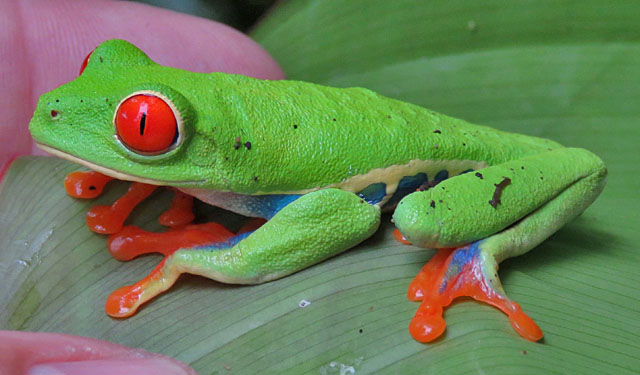
Night rains can bring out some nice moths to our hotel lights, but this huge Rothschildia lebeau was just over-the-top gorgeous.
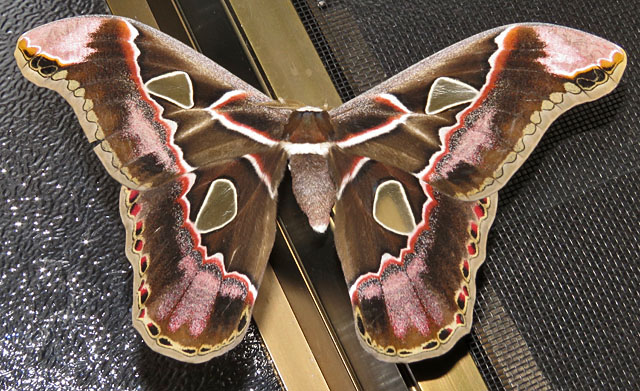
The rain came to an end, and at our lunch stop near Arenal Volcano, a Brown-throated Three-toed Sloth stretched out to dry out.
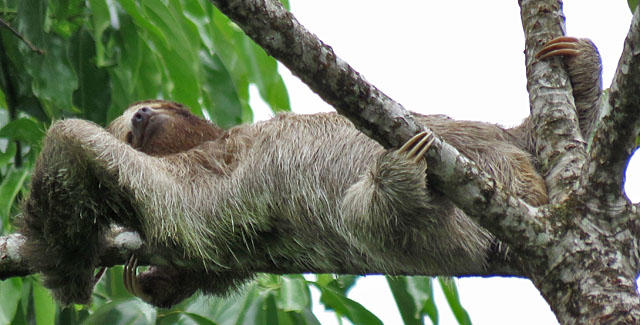
The rain had also bottled up phenomenal kettle of hundreds of Swainson's and Broad-winged Hawks that drifted right over us on our next-to-last afternoon.
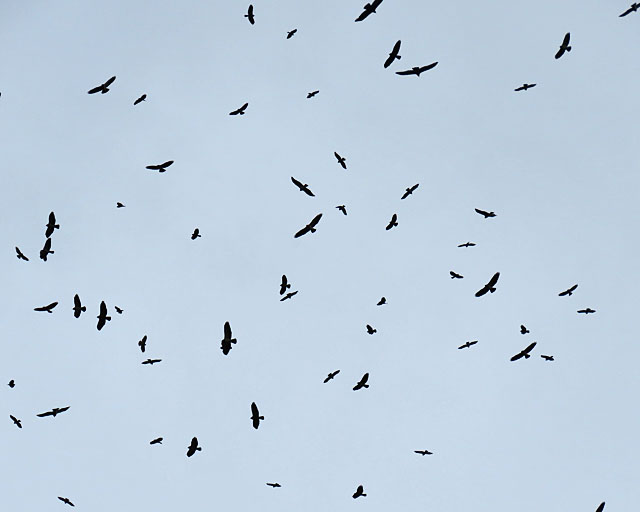
A pair of White-whiskered Puffbirds entertained us for some time on the same afternoon walk.
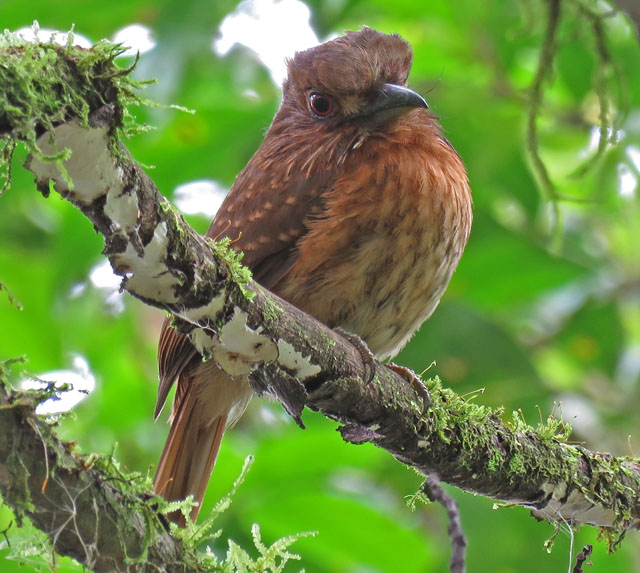
Our final morning gave us a last chance for some early morning birding, though relaxing and enjoying the birds visible from the lodge restaurant was not at all a bad idea.
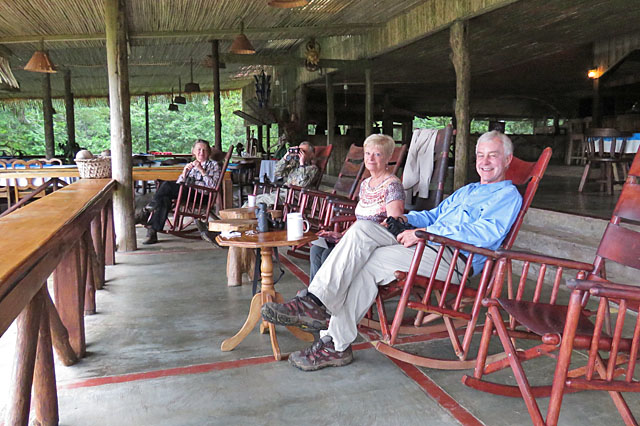
April 14:
Will Russell on WINGS' first Cuba tour
The first WINGS Cuba tour under Jon Dunn’s leadership was birdy and fascinating. We saw all the expected Cuban (and regional) endemics, saw them well (Cuban Nightjar gave only flying, flashlight-lit views) and in most cases repeatedly. Several feeding stations maintained by entrepreneurial Cubans gave us access to species normally either scarce or reclusive. Lots of wintering North American warblers were especially pleasing to some of us. We had several interesting conversations with Cuban ornithologists and artists, got a modest sense of the place through our interactions with ordinary Cubans, and had exposure to Cuba’s history both in Havana and Camaguey.
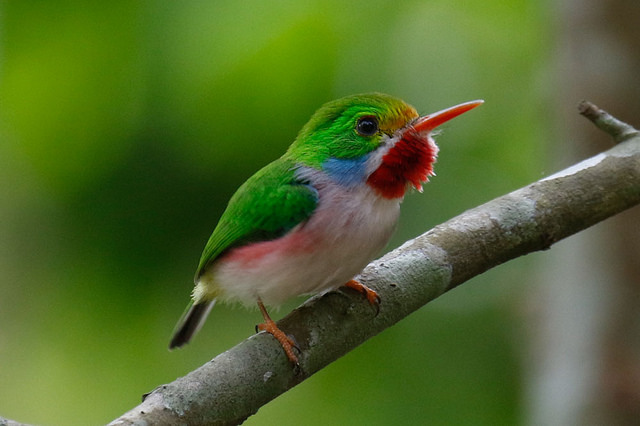
The ever-present and beguiling Cuban Tody.

After poling down a narrow waterway, and several attempts...
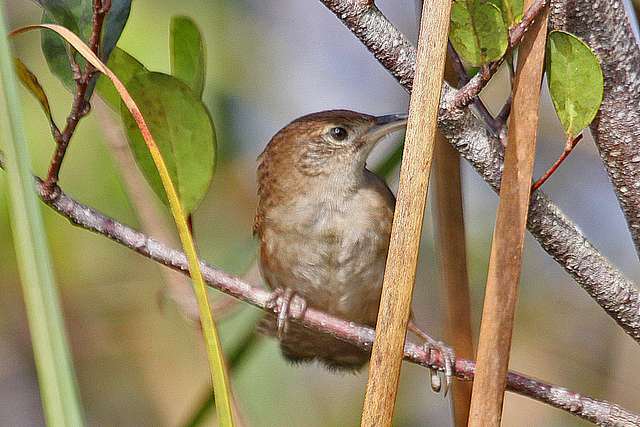
...we got reasonable looks at Zapata Wren.
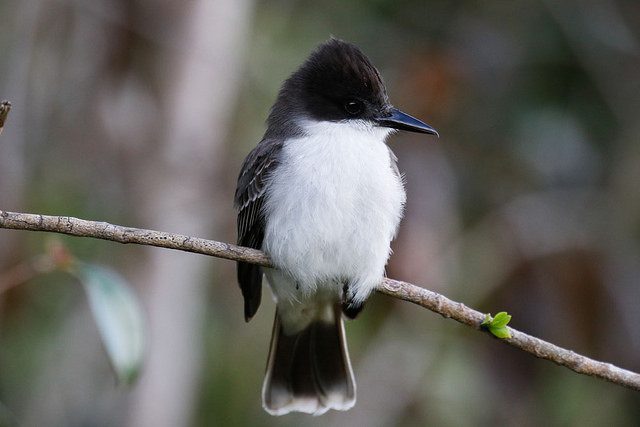
Loggerhead Kingbird was one of a number of Antillean endemics with representation in Cuba.
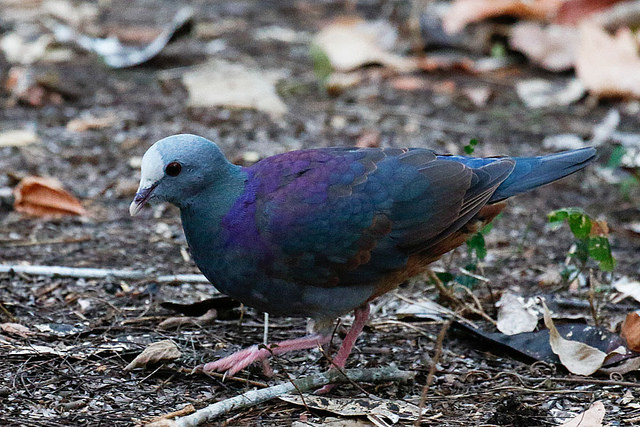
The stunning Gray-fronted Quail-Dove was one of the species we might not have seen were it not for local in-habitat feeding stations...
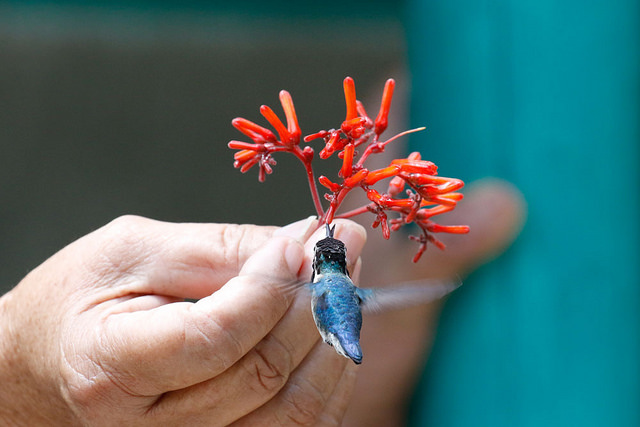
...and while we saw Bee Hummingbird in the wild, our views in a Zapata-area back yard were slightly better.
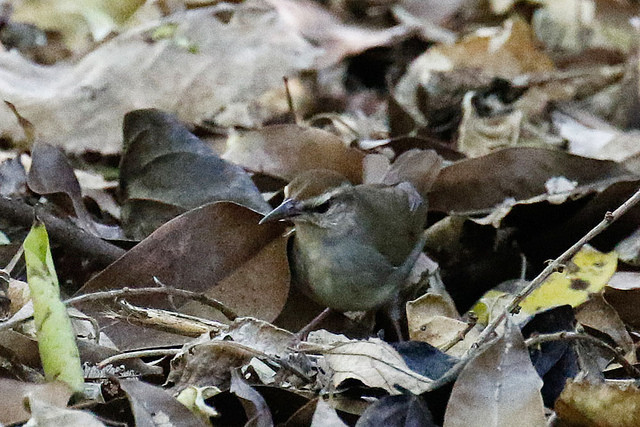
A Swainson's Warbler, one of a number of wintering warblers, was so busy rearranging leaves that it seemed unconcerned with our presence.
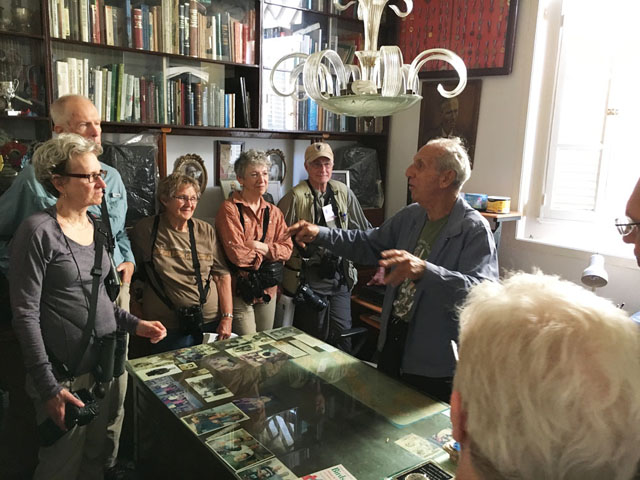
The Cuban field guide author, Orlando Garrido, signs his book and holds forth on 70 years of experiences.
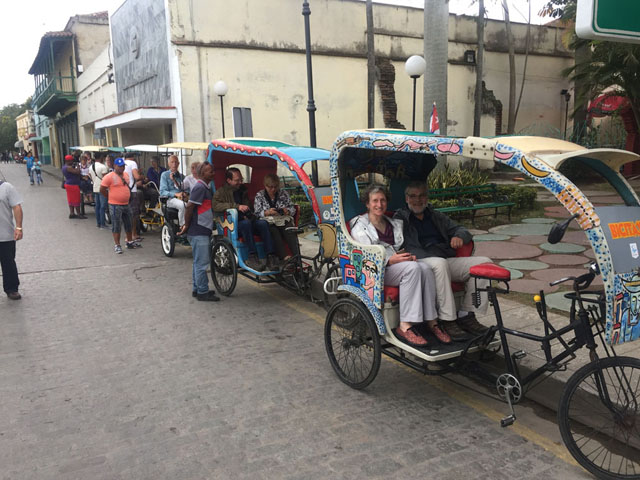
Beginning our bicycle tour of the wonderful city of Camaguey
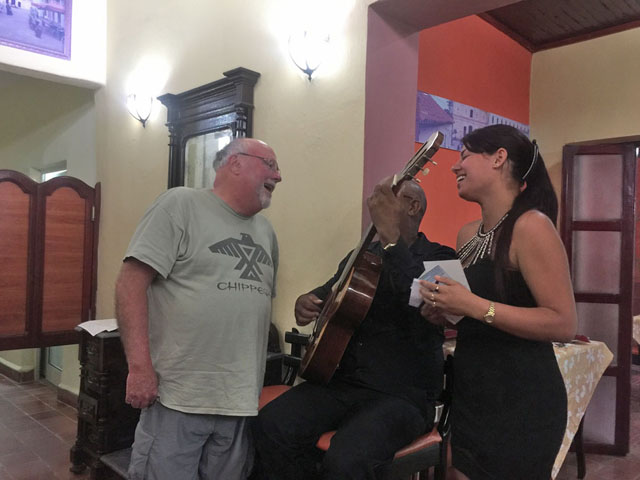
Definitely a cultural highlight for some of us as Jon Dunn convinces a very good singer/quitarist combo to try a Leonard Cohen song
April 11:
Gavin Bieber on his recently completed tour, Puerto Rico
This gem of a Caribbean island, known for its excellent weather (which was wonderfully cool this year), beautiful beaches, and fine local seafood is also an excellent island for the visiting naturalist.
Puerto Rico's northeast coastline
Over the course of our five days we encountered all 17 of the island's endemics, including the critically endangered Puerto Rican Parrot, plus two more that will surely be split soon. The highlights were many, with birds like the dazzling Puerto Rican Woodpecker, jewel-like Puerto Rican Tody (selected bird of the trip for the 9th straight year!), a cooperative Mangrove Cuckoo, stunning Red-legged Thrushes, and perky little Adelaide’s Warblers.
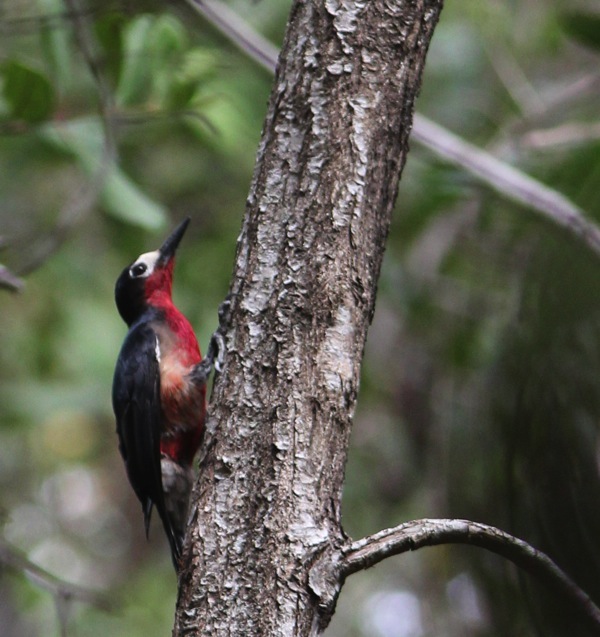
Puero Rican Woodpecker
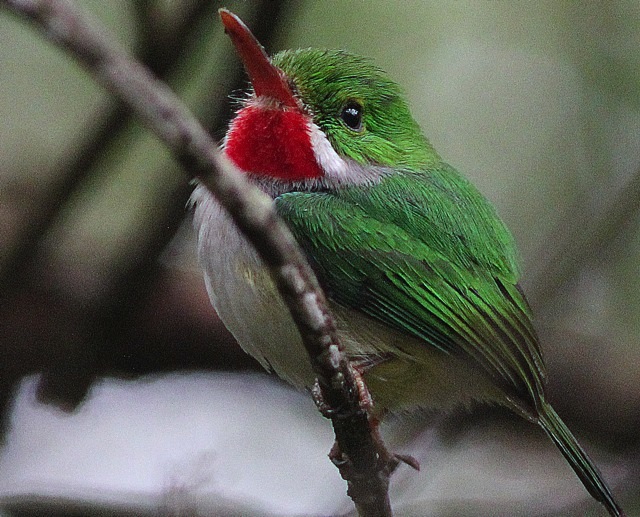
Puerto Rican Tody
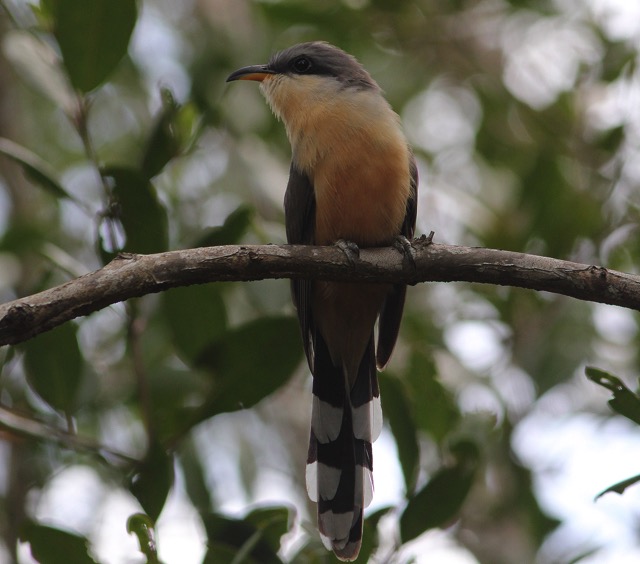
Mangrove Cuckoo
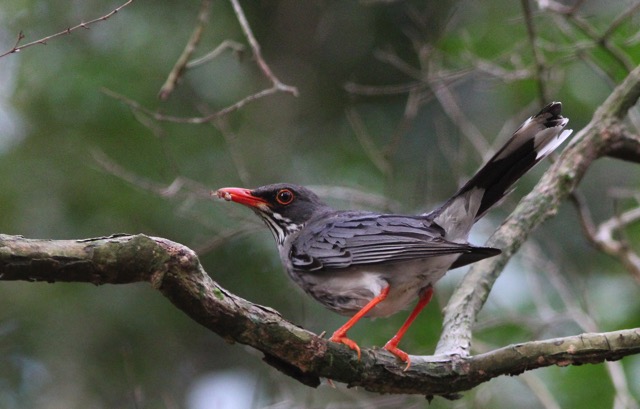
Red-legged Thrush
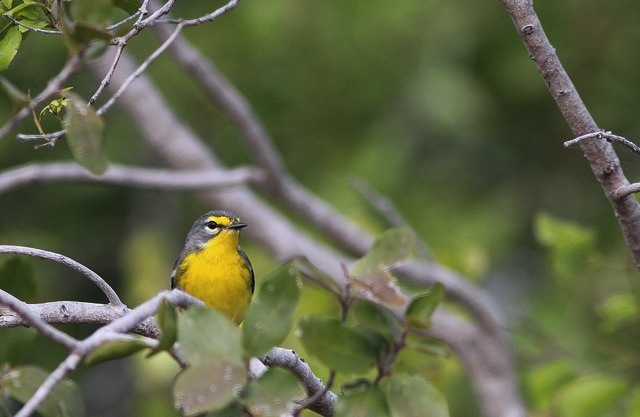
Adelaide's Warbler
The long-staying lone American Flamingo, dubbed “Mr. Pinky” put on a nice showing for us again this year, and we enjoyed multiple views of the gaudy Key West Quail Dove (and Ruddy as well).
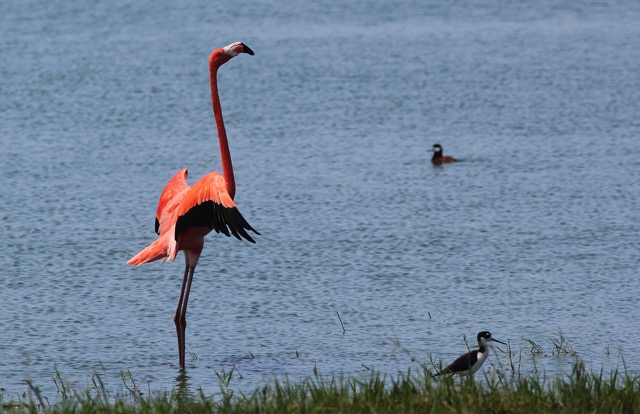
"Mr. Pinky"
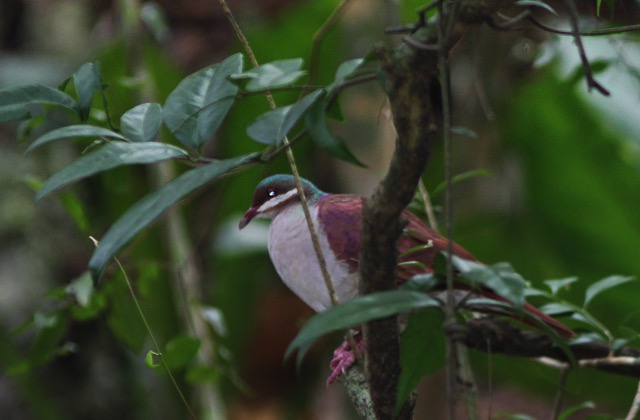
Key West Quail Dove
A surprise American Avocet, some gaudy Lizards like this Puerto Rican Ameiva and a few colorful exotics including Blue-and-Yellow Macaws filled out our triplist of 126 species overall.
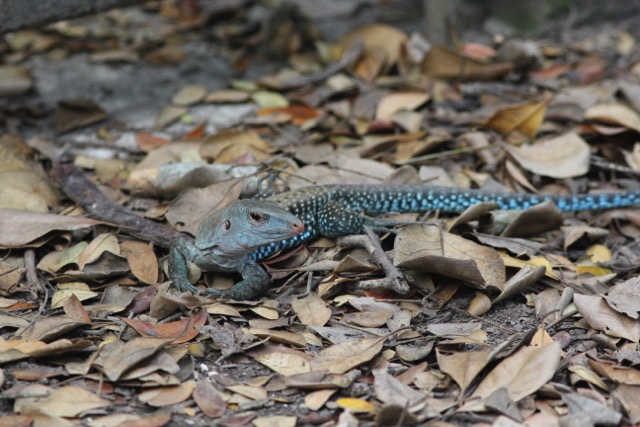
Puerto Rican Ameiva
For such a small island, Puerto Rico certainly has a wealth of natural history to offer the visiting birder!
April 11:
Jake Mohlmann on his recently-completed tour, Nebraska: The Sandhills and the Platte River
Signs of an early spring were apparent as we covered just under 1,000 miles of Nebraska’s (mostly) backroads. The mature hardwood forests of the Missouri River had yet to push out leaves allowing great views of resident species as well as many lingering wintering individuals. Typical forests birds including Black-capped Chickadees, Northern Cardinal, and White-breasted Nuthatch were abundant. A northbound Golden-crowned Kinglet even came in at eye level to investigate our curious optics, replete with flaming yellow head stripe. Waterfowl numbers were excellent and we came across 27 species with highlights including several day’s encounters with Wood Ducks, Blue-winged Teal, Common Goldeneye and all 3 merganser species.
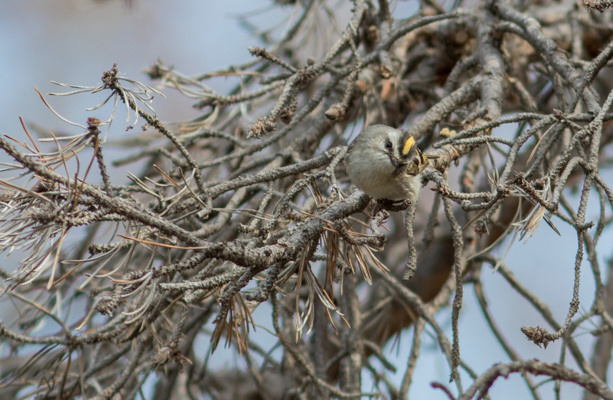
An inquisitive female Golden-crowned Kinglet displaying its golden crown
The brushy verges of eastern Nebraska’s woodlands host an impressive array of sparrows; Song, American Tree, “Red” Fox, and the Midwestern specialty Harris’s Sparrow all perched nicely for extended viewing opportunities
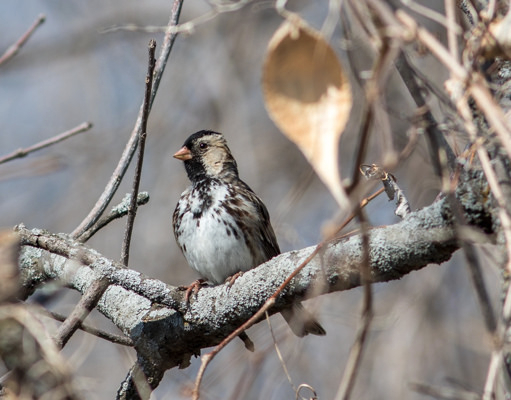
A perched Harris’s Sparrow, a Midwestern U.S. specialty
To say we saw many Sandhill Cranes would be an understatement. There’s really no words to describe the spectacle that is their migration through central Nebraska. Wave after wave, thousands upon thousands, of Sandhill Cranes poured over constantly at both sunset and sunrise. These weren’t the only birds utilizing this rich environment. Other species including Snow and Ross’s Goose, Canada and Cackling Geese, and both Trumpeter and surprise Tundra Swan were all passing through this amazing stretch of river.
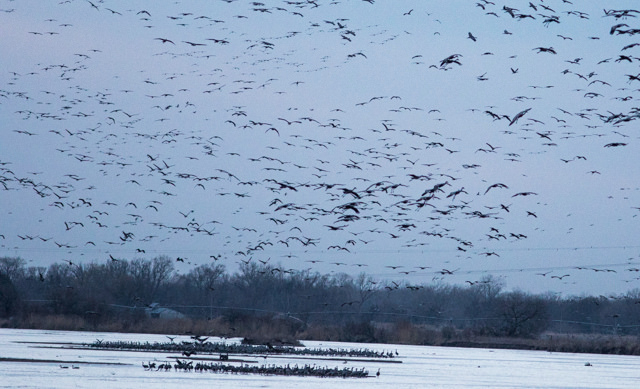
Countless Sandhill Cranes pouring in at sunset
Mullen Nebraska lies in the middle of the vast Sandhill country in the northwestern part of the state. Here we had another unforgettable experience as we watched the debonair dance moves of both Greater Prairie Chickens and Sharp-tailed Grouse. The chickens hooted loudly while expanding their yellow throat sacks and strutted back and forth sizing each other up on their lek. The fighter jet display of the Grouse was taking place even before the sun came up. With tails raised the males stomped their feet and glided by one another only occasionally fighting over the perfect piece of land.
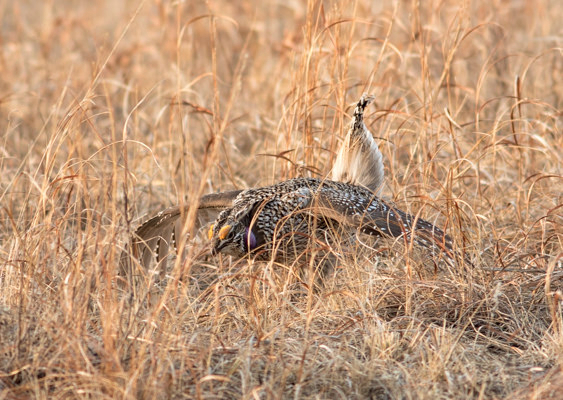
Male Sharp-tailed Grouse in full regalia
Our group was filled with locals and far flung visitor’s alike and everyone enjoyed the unseasonably warm temperatures, great conversation, excellent food, and constant avian presence over the five days we were together. Perhaps this is why 101 species of birds were seen in such a short amount of time.
April 11:
Steve Howell on his recently completed tour, Mexico: Oaxaca and Western Chiapas
The biogeography of this region is complex, with much still to learn, as we found out. Species ranged from blatant, such as this Red Warbler...
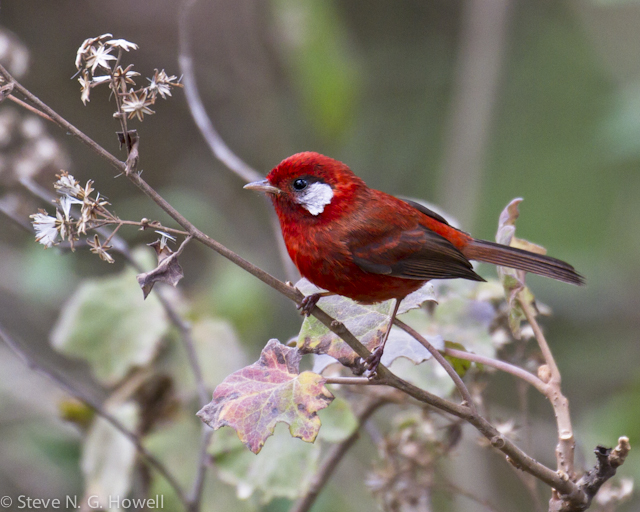
...this dazzling Green Shrike-Vireo...
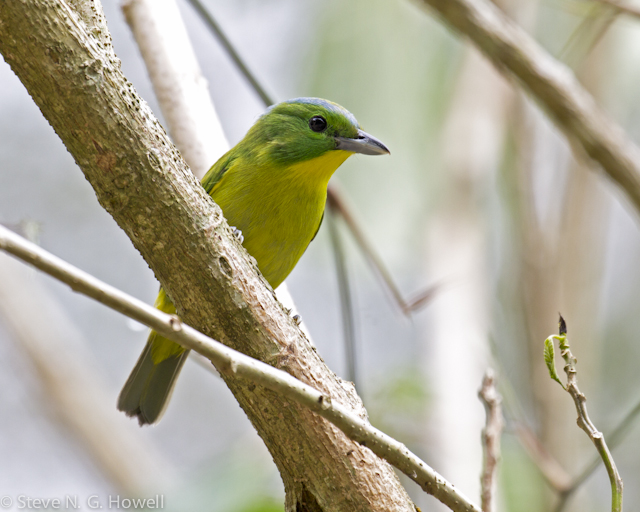
...and the gasp-inspiring Rosita’s Bunting, ...
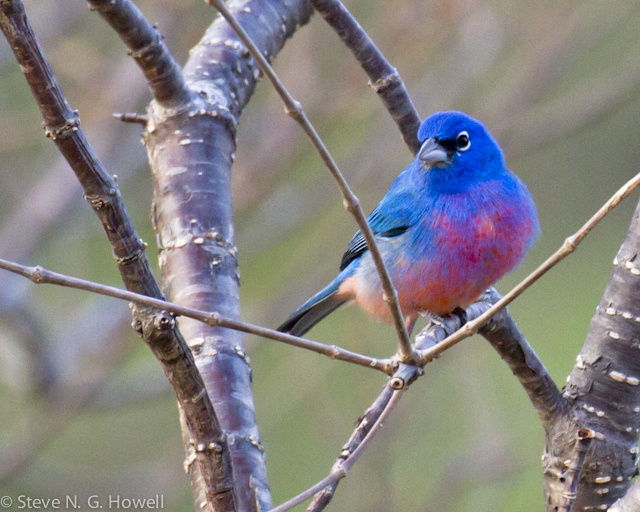
...to the cryptic, such as these Pine Siskins (huh?). Well, actually a separate species, yet to be formally split—perhaps to be named Chiapas Siskin or Ash-breasted Siskin...
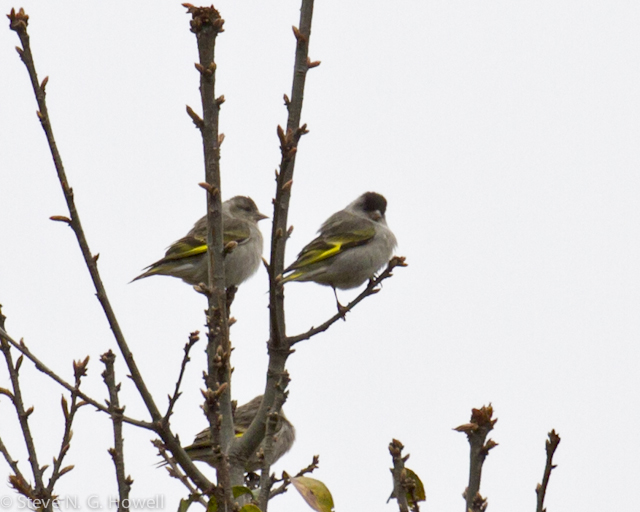
...plus this Sclater’s Woodcreeper (a vocally distinct but as-yet-unsplit taxon of Strong-billed Woodcreeper)...
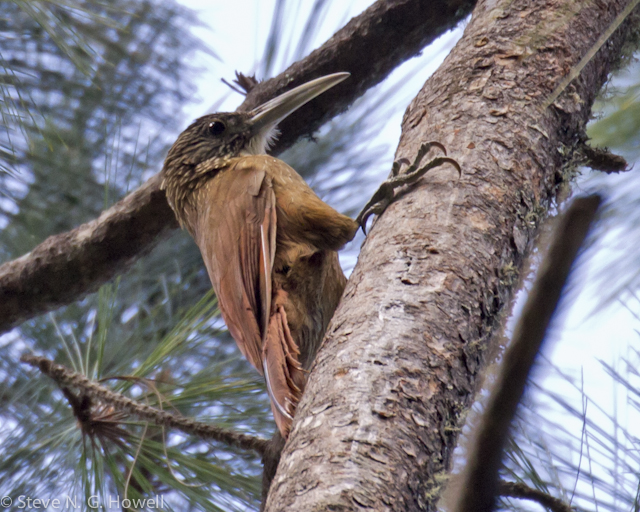
...and this Ridgway’s Flycatcher, hidden in plain view within Nutting’s Flycatcher (the two taxa differ strikingly in voice, as well as in habitat and plumage).
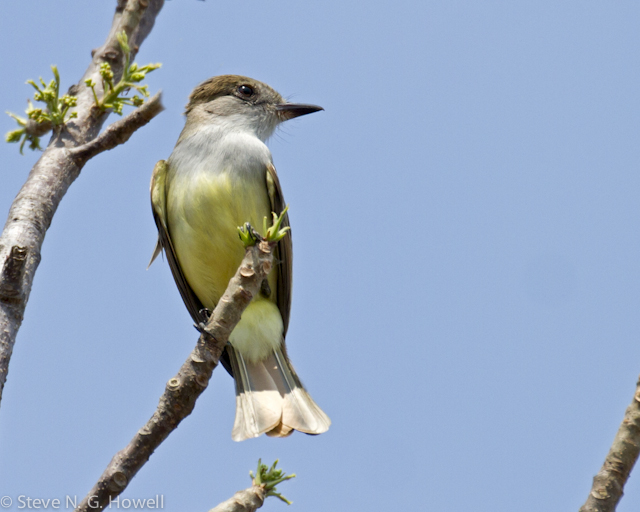
Birding in the sun on quiet backroads in Mexico, the land of wrens, jays, and sparrows...
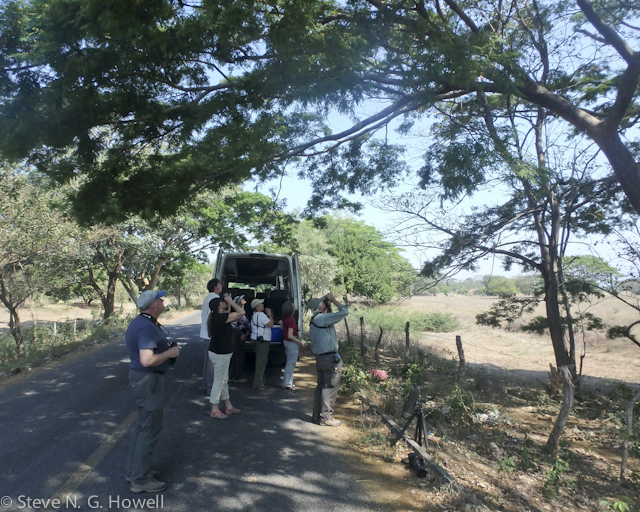
...produced many great birds, including this impressive Giant Wren...
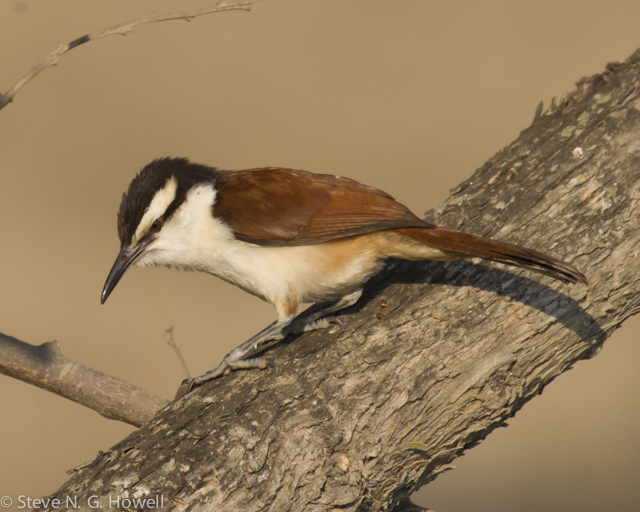
...the diminutive Dwarf Jay...
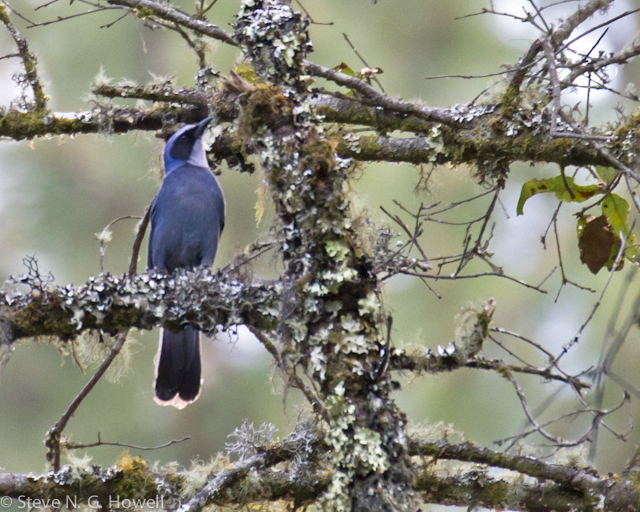
...and the very local Oaxaca Sparrow.
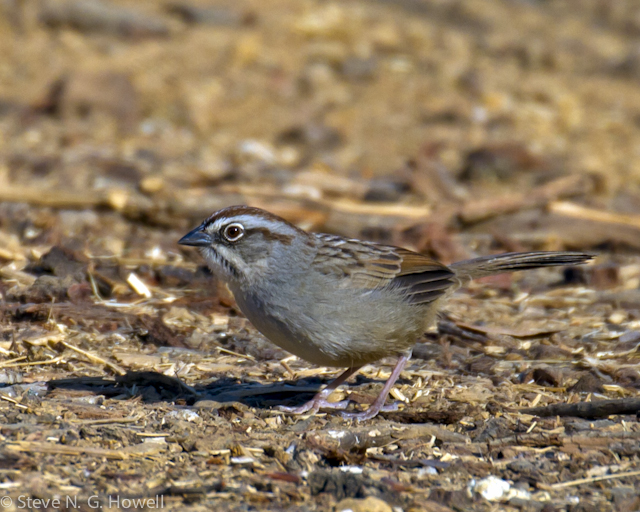
All in all, an amazing trip.
April 11:
Gavin Bieber on his recently completed tour, The Dominican Republic.
This year's Dominican Republic tour was a great success. We managed to encounter 30 endemics (seeing 28 of them) and most of the distinctive subspecies that may be split in the future, but beyond the endemics we found a host of birds restricted to islands in the Caribbean. This region may not hold the same diversity of species as a trip to the mainland tropics, but we managed fine views of some unique and often dazzling birds from the consistently encountered but undeniably cute Broad-billed Tody, charismatic Palmchats and striking Black-crowned Palm-Tanagers,

Broad-billed Tody

Palmchat

Palm Tanager
to the elegant pair of Hispaniolan Trogon and wonderfully eloquent Rufous-throated Solitaires in the mountains near the Hatian Border and comical Hispaniolan Lizard-Cuckoos, birds entertained and amazed us at every turn.

Hispaniolan Trogon

Rufous-throated Solitaire

Hispaniolan Lizard-Cuckoo
I think most of the participants will long remember the raucous and gaudy Hispaniolan Woodpeckers that were near daily companions!

Hispaniolan Woodpecker
We took three short boat trips this year, which enabled us to get incredibly close to birds like White Ibis, Least Bittern and American Flamingo and also allowed us to find the first Yellow-breasted Crakes (and a surprise Spotted Rail) for our WINGS tours here.

White Ibis

From the arid cactus-clad forests and rocky headlands of the southwest to the lush broadleaf forests of the high sierra and Los Haitises National Park it seemed as if a journey of a couple of hours was always able to bring us to another world. Add to this the friendly atmosphere, excellent accommodations and varied and tasty cuisine, and it's clear why the DR makes for a delightful holiday!
March 20:
Gavin Bieber reports from our Panama in Spring tour
Our visit to the justifiably famous Canopy Tower and Canopy Lodge was a few weeks earlier than usual this year. This made for a different array of migrant bird species than we usually see, with a passage of American Swallow-tailed Kites being (over 50 in one group!) being especially well received. It is always a pleasure to return to these fantastic and unique lodges, surrounded by an excellent mix of habitats and a great diversity of birds. The local birds put on their customary show, with a wide array of species being selected at our final dinner as “Bird of the Trip”. Some of my favorite sightings included:
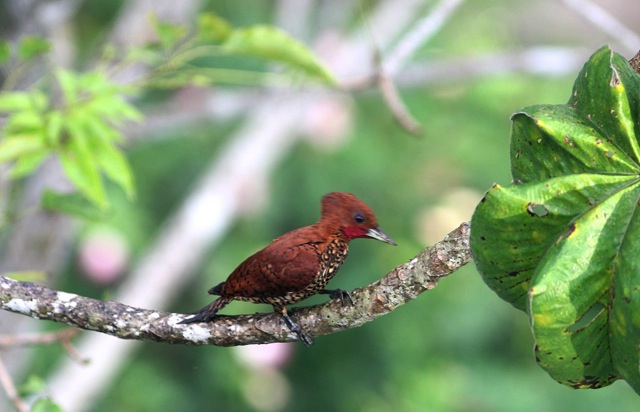
the very cooperative Cinnamon Woodpecker from atop the tower,
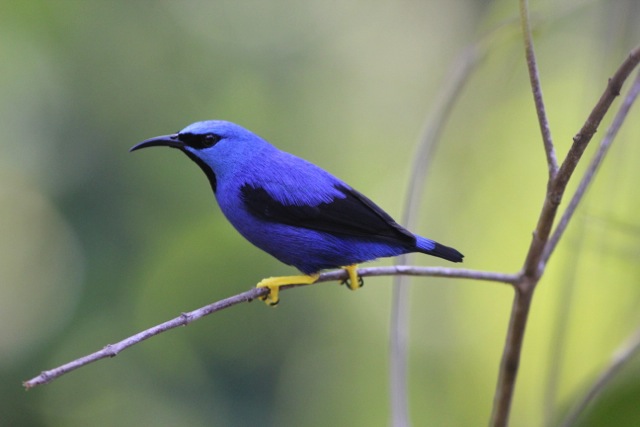
dazzlingly bright Shining Honeycreepers at Cerro Azul,
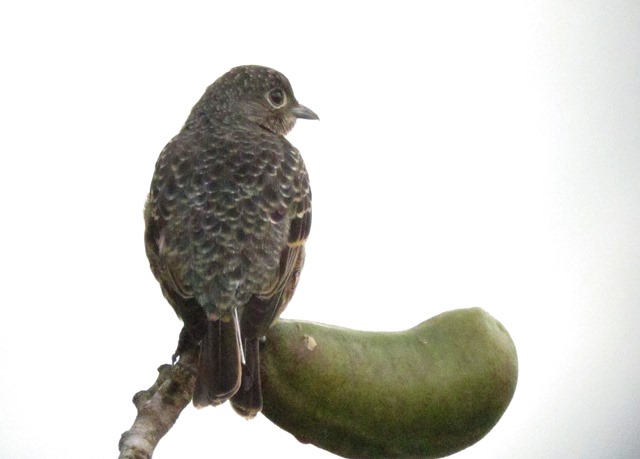
a close female Blue Cotinga in Gamboa,
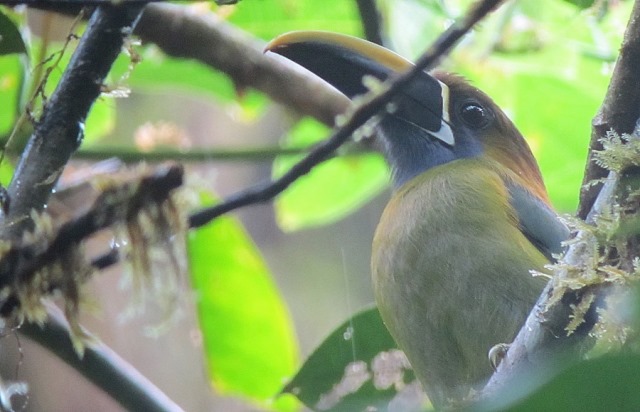
Blue-throated Toucanets and
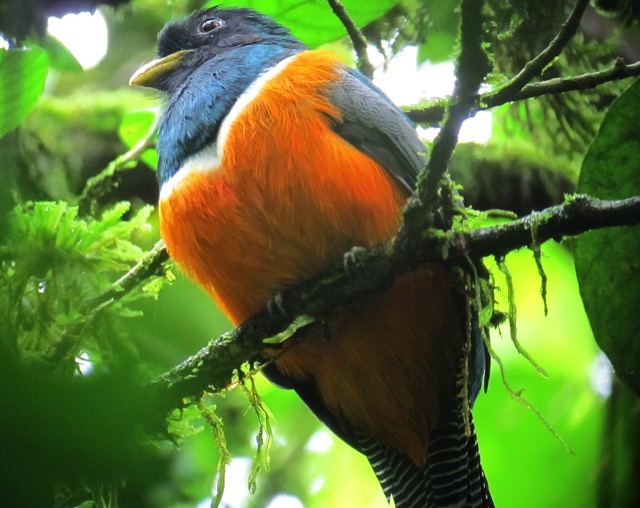
Orange-bellied Trogons at Altos del Maria on the extension.
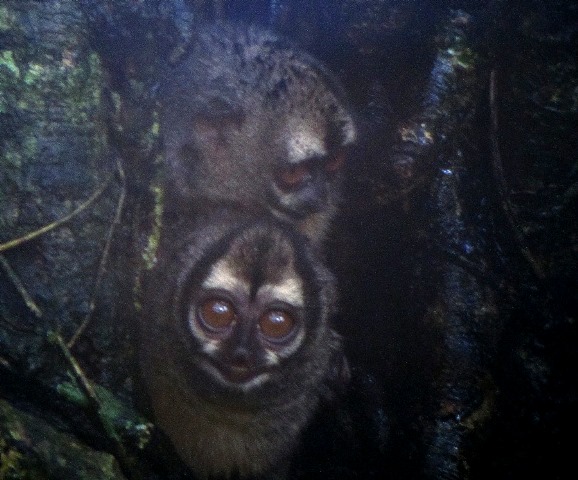
We even had excellent views of Panamanian Night Monkeys along the tower road. In all we tallied 360 species of birds, along with 19 mammals including a day-active Northern Tamandua and two Rothschild’s Porcupines! This tour continues to impress me, as the diversity and richness of the region, paired with ease of access and the comforts of the lodge make for a truly wonderful experience.
March 10:
Rich Hoyer on his recently completed tour, Peru: The Cloud Forests of the Rio Mayo and Abra Patricia
Our tour to northern Peru’s cloud forests of Abra Patricia and the Alto Mayo Valley was full of exciting and beautiful birds. We saw over 350 species in nine days, many of them with exceedingly small world ranges and drenched with colors. It helped that there are now eight hummingbird feeding stations on our route, and we tallied at least 45 species of these jewels, including such scarce and little known species as Koepcke’s Hermit, Blue-fronted Lancebill, Greenish Puffleg, and Rufous-vented Whitetip. One of our main targets was the unbelievable (even when you actually see it) Marvelous Spatuletail, which was already at the feeders when we walked up to them.
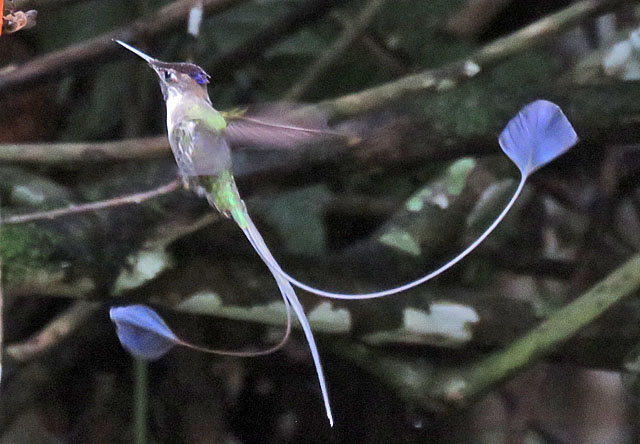
The big bully and most abundant hummingbird at a couple of the stations, including at our lodging at Abra Patricia, was the nonetheless stunningly attractive Chestnut-breasted Coronet.
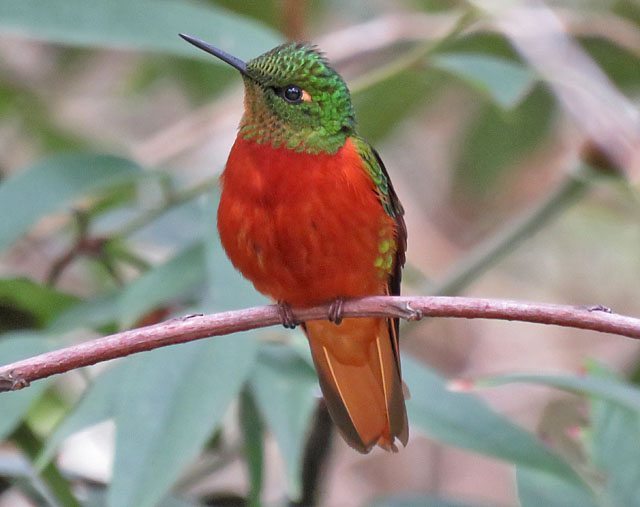
One of the feeding stations also has a brilliantly engineered blind with a hopper that delivers grain, and we were the lucky group one day to witness the arrival of a covey of Rufous-breasted Wood-Quail.
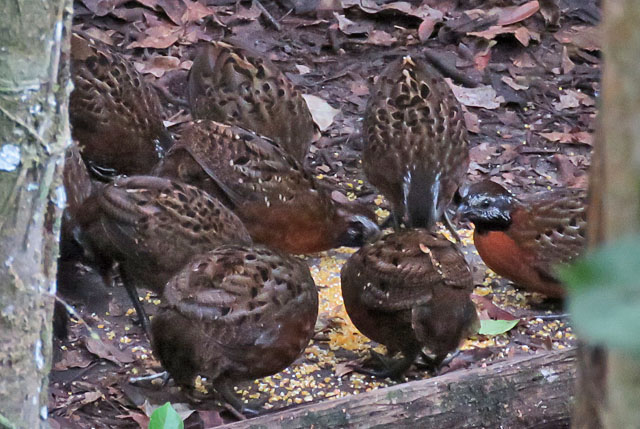
One of the most attractive birds with a limited range in Peru is the Yellow-scarfed Tanager, never a guarantee, and we were lucky to have a few on one day, including one on our hotel grounds.
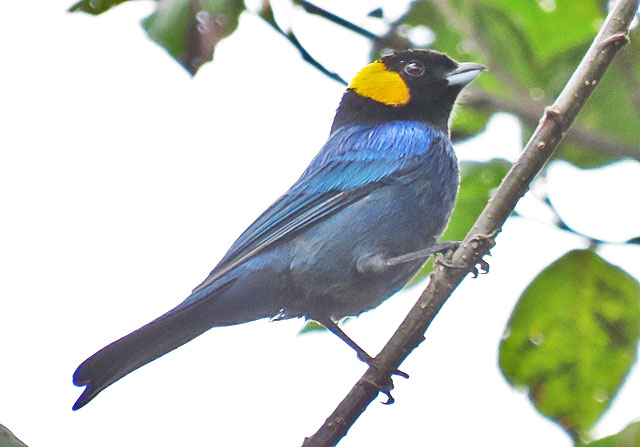
The much more widespread and common Paradise Tanager never ceases to attract attention.
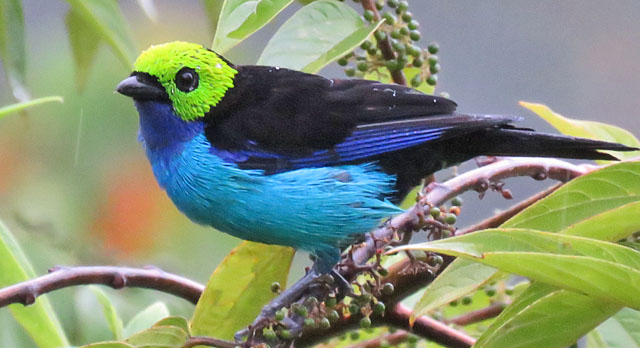
We heard a couple Golden-headed Quetzals before one came into view for a most memorable encounter.
P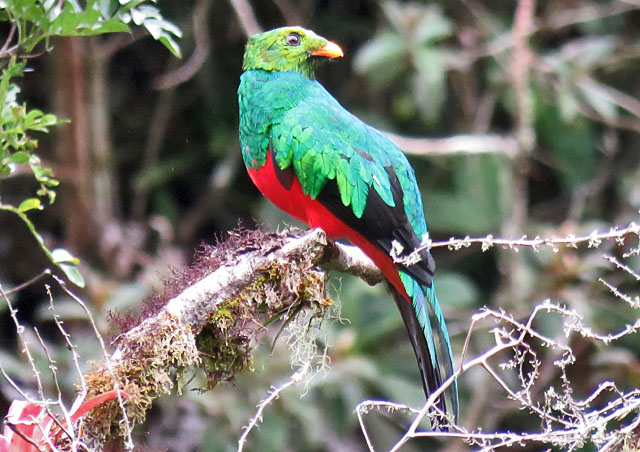
Even drab birds were part of the tour’s experience, such as a Sulphur-bellied Tyrant-Manakin on a nest, perhaps still undescribed.
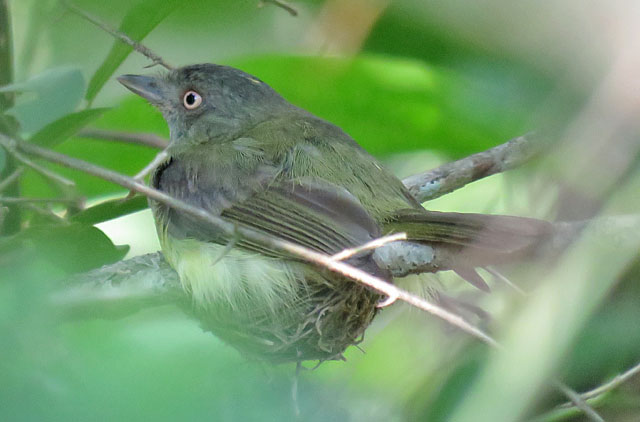
The odd Oilbird is always a highlight of this tour, given that we view them from a small bridge on the main highway, perhaps the most accessible breeding colony in the world.
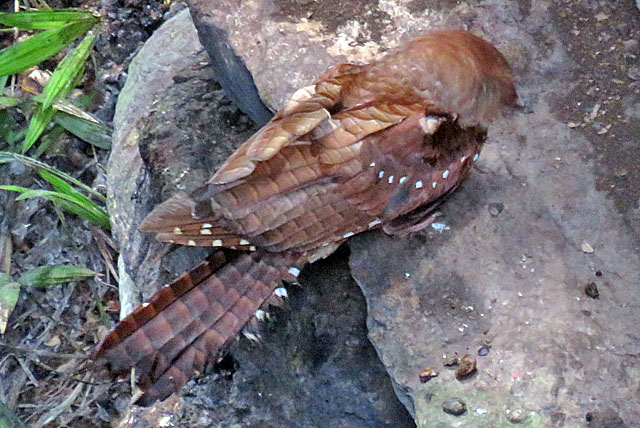
We were awash with blooming orchids, many of them fragrant, and the huge, recently described Phragmipedium kovachii was simply spectacular, described as the most important orchid discovery in the past 100 years.
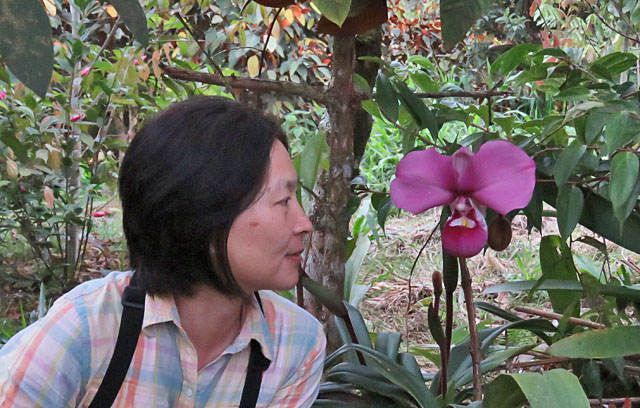
The lights at the owlet lodge drew our attention every evening and early morning with a bewildering diversity of moths, beetles, and other invertebrates; this Rothschildia aricia silk moth was by far the most spectacular.
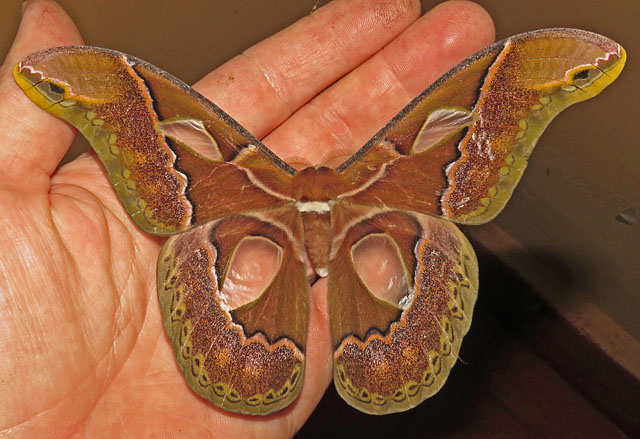
March 8:
Jon Feenstra on his recently concluded tour, Ecuador: The Amazon Lowlands
We’re back from a week in the Ecuadorian Amazon based at Sani Lodge. That was a week of no cars or roads or city noise or really anything but the big woods and great wildlife. We saw a fine selection of classical rainforest species like White-throated Toucan, Scarlet Macaw, Dot-backed Antbird, and even both Crested and Harpy Eagles!
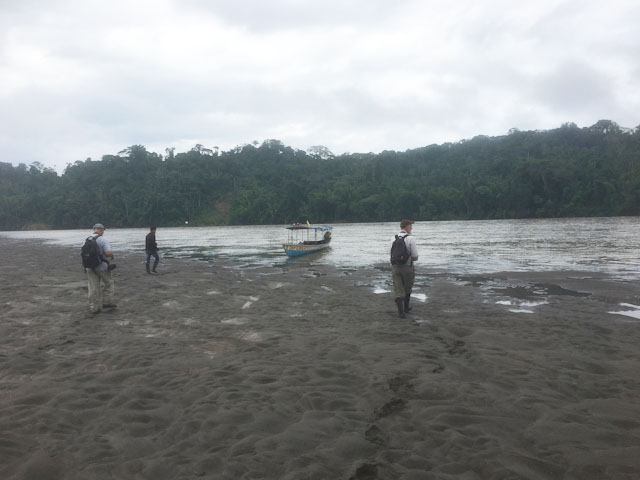
The group returns to the boat after a few hours of birding one of the Rio Napo Islands. Such species as Olive-spotted Hummingbird, White-bellied Spinetail, and River Tyrannulet occur on these islands, but no where on the shore!
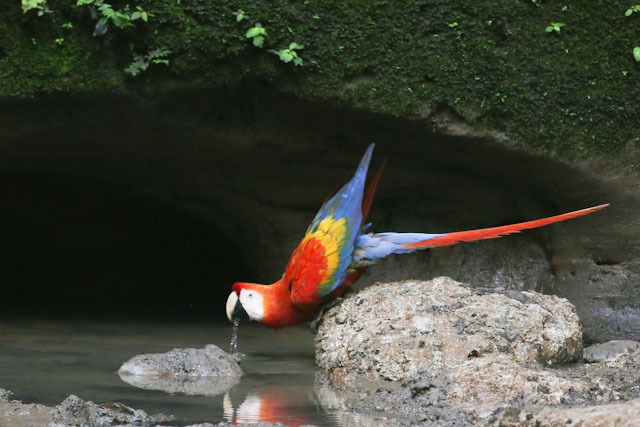
A Scarlet Macaw comes down for a drink at a “parrot lick”, a water hole site where various parrot species get minerals to neutralize the acids and toxins of their fruit and seed diet.
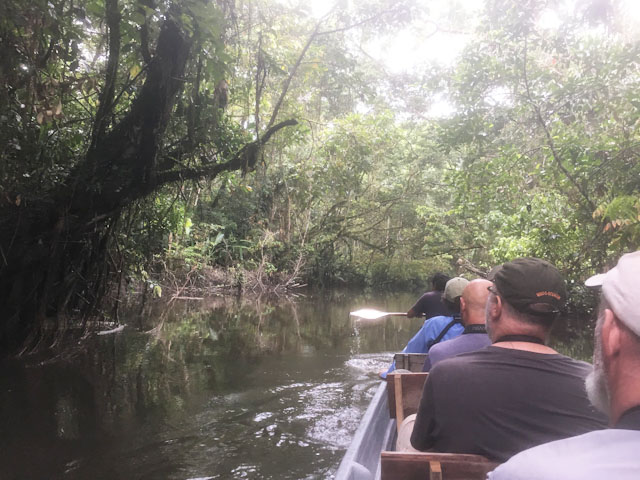
The group takes a paddle down one of the forest streams near the lodge. Birding from the water is really the best way to see some of those tricky forest birds.
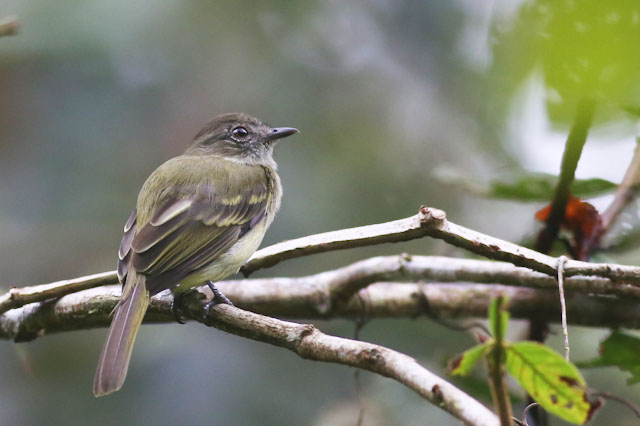
A Yellow-crowned Elaenia is a scarce and obscure little flycatcher living in flooded forest.
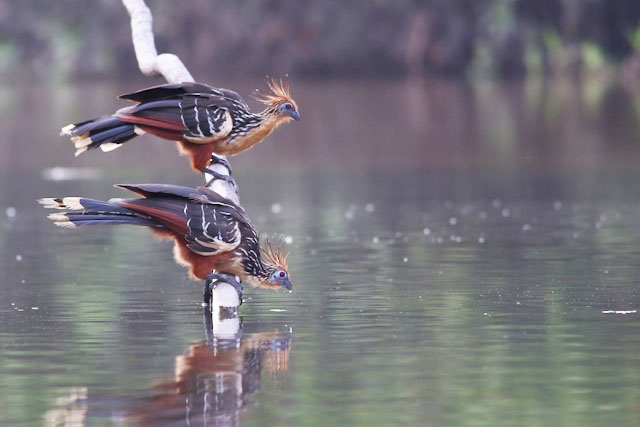
Less scarce, but perhaps equally obscure, at least taxonomically, is Hoatzin. Watching these bizarre birds is like winding back the clock to the time of the dinosaurs.
March 4:
Fabrice Schmitt and Steve Howell on the second part of their just-concluded round Cape Horn sea and land cruise, Valparaiso to Buenos Aires
All in all this was a remarkable trip. Where else can you bird comfortably from an open deck in 40-knots winds! The primary focus of this trip is, of course, the true seabirds, and this year we found a record 36 species of tubenoses and 4 penguins.
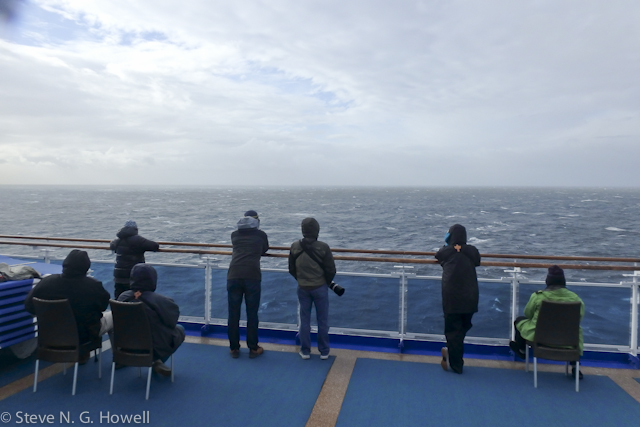
As we headed into the South Atlantic, seabirds changed subtly from those in the Pacific, first with Great Shearwaters, and later with numbers of the handsome Yellow-nosed Albatross, here an adult.
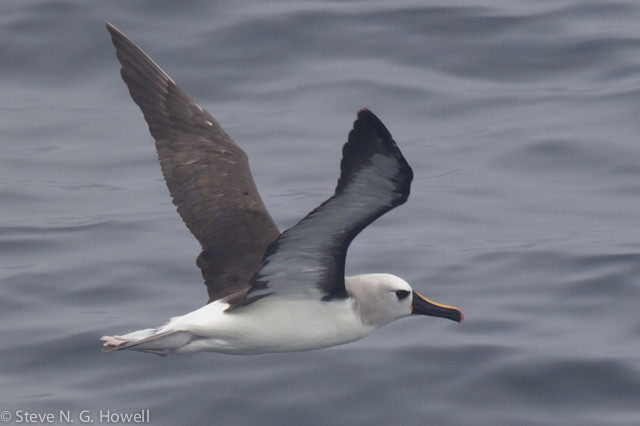
Many Manx Shearwaters were fattening up ready for their spring migration, often in feeding groups alongside Magellanic Penguins!
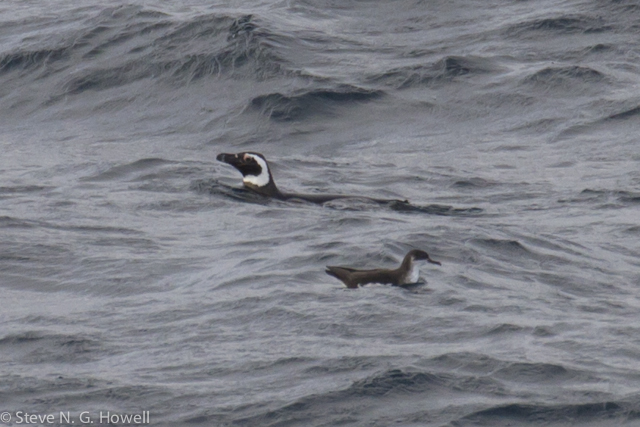
Our last day at sea produced a new species for the tour—the poorly known Cape Verde Shearwater, which winters mainly off Brazil but sometimes reaches northern Argentina.
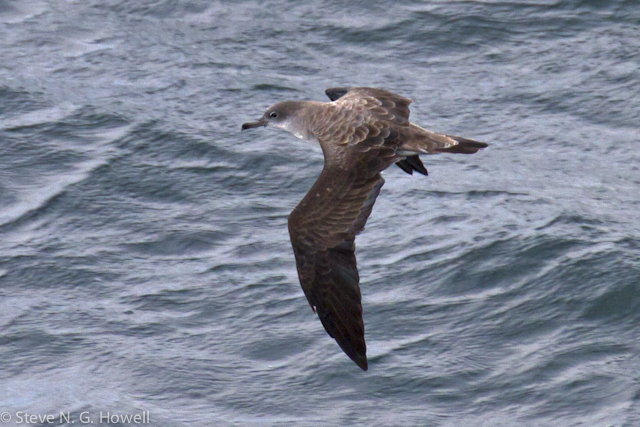
Landings along this section of our route included the Falkland Islands,
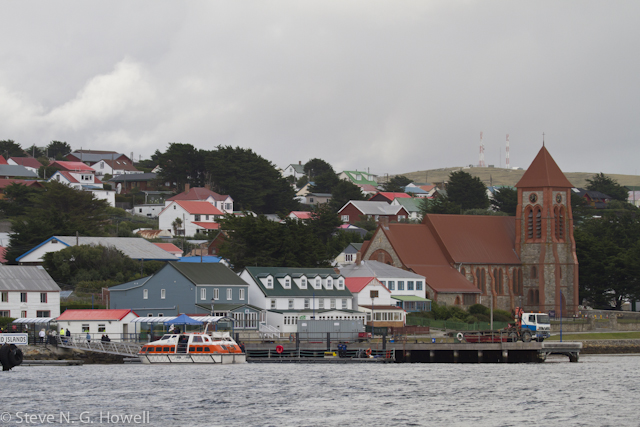
Where we had excellent views of migrant White-rumped Sandpipers on the beach (foreground, along with some larger species in the background...).
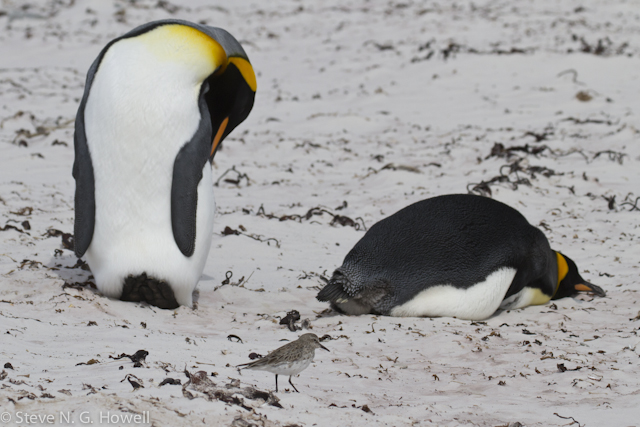
A more conventional picture of the ever-popular King Penguin, commuting from the colony.
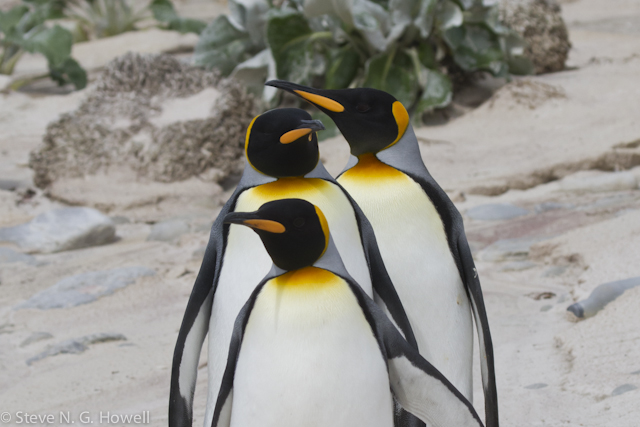
As well as great birds we encountered a good selection of marine mammals, including some very acrobatic Peale’s Dolphins.
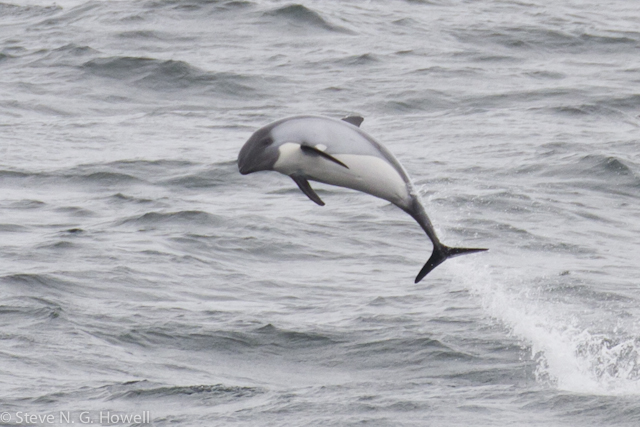
This image epitomizes well the seabird diversity on our cruise—can you identify the eight tubenose species present? A Southern Royal Albatross is holding its own against Salvin’s, Buller’s, and Black-browed Albatrosses, with a Pink-footed Shearwater coming in from the left, a Fuegian [Wilson’s] Storm-Petrel behind, and a wave-obscured Sooty Shearwater and a Stejneger’s Petrel off to the right!
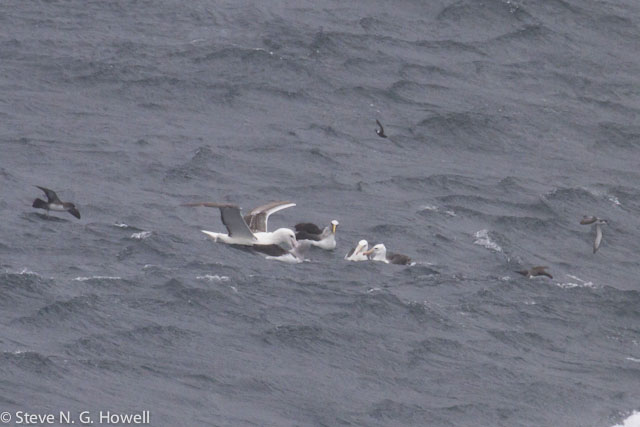
And just to prove it wasn’t all shades of gray seabirds, here’s a trio of Chilean Flamingos we found at a windswept Patagonian lake.
